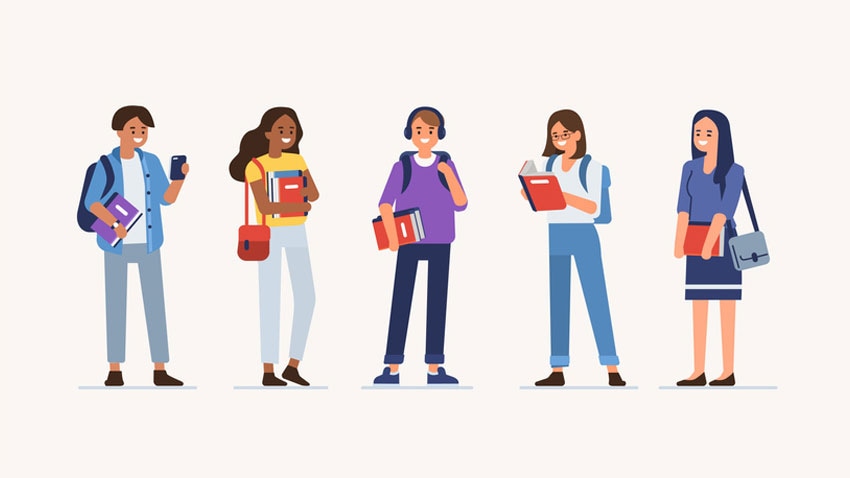At a glance
- Students who feel connected to, supported by, and respected by their peers show greater engagement in school.
- These students also report feeling more connected to their school.

Overview
Students reported higher levels of school connectedness when they and their peers:
- Get to know each other well in classes.
- Are interested in getting to know other students.
- Enjoy doing things with one another in school activities.
- Enjoy working together on projects in class.
Peer connection and support
These skills can help foster strong connections among students.
Example strategies:
Set up time in class for informal discussions among students.
Use activities such as "Think, Pair, Share"—students think about a question or topic, discuss it with a peer, and report back to the group. This activity enables students to ask and learn about one another.
Example strategies:
Keep whole-group lessons or teacher-led instruction short (10-20 minutes at a time). And use time to prepare students for more hands-on activities.
Example strategies:
Assign a collaborative class project to be completed either in person or virtually. Assign different sections of the project to small groups of students. This allows them to collaborate and complete projects together.
Consider using platforms that enable students to collaborate on assignments and activities with students outside of their immediate community. When students collaborate with "e-pals" on assignments, it can help expand their social networks. It also exposes them to voices and perspectives they would not otherwise encounter.
Example strategies:
Ask students to write down an answer to a question. (Answers could be submitted: on paper, or as an "exit ticket" on whiteboards during in-person instruction; through "chat" features during virtual instruction). Then, group students in teams to discuss their answers. Each team should have at least one student with a firm understanding of the solution or answer. This arrangement empowers students to help each other and gives them varied perspectives on possible alternative answers.
Example strategies:
Set clear and explicit expectations around respect for all students.
These expectations can be integrated into class guidelines, rules, or agreements.
Model respect and consider classroom activities that provide students with opportunities to practice and improve listening and communication skills.
One example is to use the spider web discussion model (see 8 Strategies to Improve Participation in Your Virtual Classroom in Tools & Templates below). All students respond to a teacher-guided question at the start of class. After students listen to all responses, they engage in a broader discussion. You then draw lines on paper or whiteboard, tracking the flow of the conversation from student to student. This results in a web of lines that reflect the conversation pattern.
- Kearney WS, Smith PA, Maika S. Examining the impact of classroom relationships on student engagement: a multilevel analysis. J Sch Publ Relat. 2014;35(1):80–102.
- Ruzek EA, Hafen CA, Allen JP, Gregory A, Mikami AY, Pianta RC. How teacher emotional support motivates students: the mediating roles of perceived peer relatedness, autonomy support, and competence. Learn Instr. 2016;42:95–103.
- Kim HY, Cappella E. Mapping the social world of classrooms: a multi-level, multi-reporter approach to social processes and behavioral engagement. Am J Community Psychol. 2016;57(1-2):20–35.
- Acosta J, Chinman M, Ebener P, Malone PS, Phillips A, Wilks A. Understanding the relationship between perceived school climate and bullying: a mediator analysis. J Sch Violence. 2019;18(2):200–215.
- Schwartz S. Classroom routines must change. Here's what teaching looks like under COVID-19. 2020. Accessed August 23, 2024.
- Lightner J, Tomaswick L. Active learning – Think, Pair, Share. Kent State University Center for Teaching and Learning; 2017. Accessed August 23, 2024.
